ORGANIC VS. REGULAR MILK

Milk has many wonderful attributes to our health. It builds strong bones, lowers blood pressure and can reduce the risk of diabetes and some cancers. It's also helpful for maintaining a healthy weight. It is both delicious and satisfying. But take a walk along today's refrigerated aisle in most grocery stores when shopping for milk and you'll notice an increase in the variety of milked offered. Milk comes in many "shapes and sizes" including: different fat levels, lactose-free, flavored and plain, rBST-free, organic and conventionally-produced. This variety allows consumers to choose the milk product that best matches their nutritional needs and personal preferences.
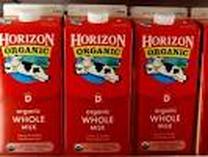
When considering between organic vs. regular milk there are a few things to keep in mind that may or may not be worth the $3 difference. One big advantage organic milk has over regular milk is its shelf life. Most brands of organic milk are sterilized at very high temperatures around 280 degrees F, so it can keep for up to two months. Because regular pasteurized milk is heated to only 165 degrees F or lower, it doesn't have the same shelf life. So if you're concerned about milk going bad in your refrigerator, organic milk might actually save you money.
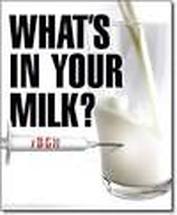
Another organic milk advantage is that it shines in comparison to regular milk when you consider what's left out...like artificial hormones found in regular milk. Before the U.S. Department of Agriculture gives its authentic "USDA Organic" label to milk, the USDA certifies that cows have not been given the synthetic hormone known as recombinant bovine growth hormone (also known as rBGH). Non organic Farmers often give rBGH to dairy cows in order to increase their production by 10%.
Hormones aren't the only additional additives found in regular milk. Antibiotics have also been found in regular milk. These antibiotics are given routinely to cattle (and many other livestock) and the drugs show up in the milk the cows produce. Pesticides, too, are also present in the feed of dairy cattle, and these too can show up in milk. Organic milk, however, has none of these ingredients, since their use is forbidden in USDA-certified dairy cows, who can only eat certified organic feed.
Hormones aren't the only additional additives found in regular milk. Antibiotics have also been found in regular milk. These antibiotics are given routinely to cattle (and many other livestock) and the drugs show up in the milk the cows produce. Pesticides, too, are also present in the feed of dairy cattle, and these too can show up in milk. Organic milk, however, has none of these ingredients, since their use is forbidden in USDA-certified dairy cows, who can only eat certified organic feed.
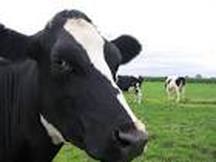
In 2010, the USDA amended their organic regulations, so that all organic dairy cattle must now spend much of the year grazing in open pastures, as opposed to feed lots or indoor feeding pens. While this may seem more natural and healthy, there is some controversy over whether it makes the milk healthier.
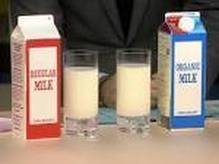
Organic labeling is not a measure of the quality or safety of a product. As with all organic foods, it’s the process that makes milk organic, not the final product. Cup for cup, organic and regular milk contain the same nine essential nutrients such as calcium, vitamin D magnesium, phosphorus, high-quality protein and potassium that make dairy products an essential part of a healthy diet. A wise consumer must take all of these factors into consideration when deciding which milk is the better buy. Any way you pour it, milk is a great nutritional deal for your food dollar spent.
ORGANIC MILK AND REGULAR MILK: IS THERE A DIFFERENCE? VIDEO
ASSESSMENT #1

A myth is a widely held, yet mistaken belief. In this assessment, students will be given 10 questions based on common dairy myths. Students will answer each question True or False with a pen and within 20 minutes. Each question will be worth 1 point for a total of 10 points. Once complete students will turn in their paper for a final grade. Below is a copy of the answer guide.
Milk Myth #1: Drinking Milk Causes Early Puberty
FALSE: There is no scientific evidence that drinking milk causes early puberty.
Milk Myth #2: Drinking Milk Causes Mucus
FALSE: Milk consumption does not lead to mucus production or occurrence of asthma.
Milk Myth #3: Drinking Milk Does Not Cause Kidney Stones
TRUE: Milk has no association to the development of kidney stones.
Milk Myth #4: Organic Milk is Much Healthier Than Regular Milk
FALSE: Both types of milk—organic and conventionally produced—are highly nutritious.
Milk Myth #5: Chocolate Milk Is Better Than Soda
TRUE: Although chocolate milk has some added sugar it contains all the important nutrients that plain white milk provides.
Milk Myth #6: Soy Milk is not Nutritionally Equal to Cow’s Milk
TRUE: Soy-based beverages are plant based and are not nutritionally equivalent to cow’s milk.
Milk Myth #7: People With Lactose Intolerance Need to Avoid all Milk and Dairy Products
FALSE: Most people with lactose intolerance can enjoy milk and dairy products.
Milk Myth #8: The Dairy Industry Adds Growth Hormones to Milk
TRUE: Studies have shown that milk from non organic dairy farmers contain rBST.
Milk Myth #9: Raw Milk is More Nutritious Than Pasteurized Milk
FALSE: Raw milk is not more nutritious and can pose serious health risks.
Milk Myth #10: Dairy Cows are not a Major Contributor to Global Warming
TRUE: Milk production accounts for less than 2 percent of greenhouse gas emissions while contributing significant quantities of essential nutrients.
Milk Myth #1: Drinking Milk Causes Early Puberty
FALSE: There is no scientific evidence that drinking milk causes early puberty.
Milk Myth #2: Drinking Milk Causes Mucus
FALSE: Milk consumption does not lead to mucus production or occurrence of asthma.
Milk Myth #3: Drinking Milk Does Not Cause Kidney Stones
TRUE: Milk has no association to the development of kidney stones.
Milk Myth #4: Organic Milk is Much Healthier Than Regular Milk
FALSE: Both types of milk—organic and conventionally produced—are highly nutritious.
Milk Myth #5: Chocolate Milk Is Better Than Soda
TRUE: Although chocolate milk has some added sugar it contains all the important nutrients that plain white milk provides.
Milk Myth #6: Soy Milk is not Nutritionally Equal to Cow’s Milk
TRUE: Soy-based beverages are plant based and are not nutritionally equivalent to cow’s milk.
Milk Myth #7: People With Lactose Intolerance Need to Avoid all Milk and Dairy Products
FALSE: Most people with lactose intolerance can enjoy milk and dairy products.
Milk Myth #8: The Dairy Industry Adds Growth Hormones to Milk
TRUE: Studies have shown that milk from non organic dairy farmers contain rBST.
Milk Myth #9: Raw Milk is More Nutritious Than Pasteurized Milk
FALSE: Raw milk is not more nutritious and can pose serious health risks.
Milk Myth #10: Dairy Cows are not a Major Contributor to Global Warming
TRUE: Milk production accounts for less than 2 percent of greenhouse gas emissions while contributing significant quantities of essential nutrients.
ASSESSMENT #2

One element of assessments that most lessons don't often include are ones that appeals to the 5 senses. In this next assessment, students will come up to the front of the classroom to sample 2 small glasses of milk mark "A" and "B". Students will then decide which glass taste better and mark their decision on the tally sheet. Once every has completed their sampling, scores will be tallied and as an entire class we will see which glass of milk was more tasteful..."A" or "B". Then it will be revealed to the students which glass was organic milk and which glass was regular milk.
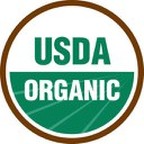
For more information on organic dairy products, please visit the
United States Department of Agriculture.
REFERENCES
Pictures accredited to the following: YouTube video accredited to the following
crooksandliars.com drink-milk.com
www.facebook.com
www.foodrenegade.com
modernhomesteadcafe.com
www.nbcnews.com
www.almightydad.com
crooksandliars.com drink-milk.com
www.facebook.com
www.foodrenegade.com
modernhomesteadcafe.com
www.nbcnews.com
www.almightydad.com

